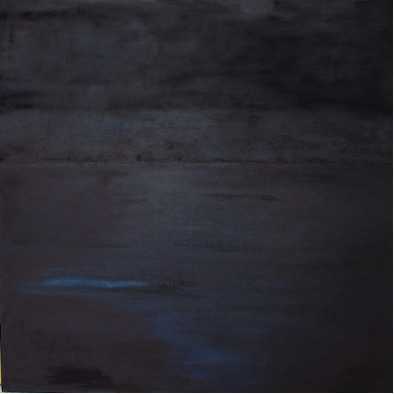
| Log In | Sign Up | Lost Password |
Fulham Lethe by Sarah Needham :: You need to be a member to contact artists →Join :: Portfolio This work is part of a series painted during 2016 using indigo and oil painting media. I used indigo because it plays such a long role in the history of global trade. ( see below)
In addition I use indigo because it has an amazing versatility of tone and colour when mixed with oil painting media. By layering and the judicious use of different media I have been able to produce a wide range of tones and variations in colour, creating images that reflect the feelings which I want to explore: The feeling you have when you walk into a totally dark night, where at first you see nothing, but with stillness and time you begin to experience the shadows and then the vastness of the space you are in. With this series of work my intention is to create space for lost stories, spaces that offer the viewer the chance to stand in the dark for a time remembering. ........................................................................................................................................................................................................ A Brief history of indigo in international trade: Originally from India, it is mentioned in classical times by Pliny, the history of global trading patterns can be traced through the trade in indigo. The insularity of the Middle ages were marked by use of Woad in Europe, a local product,with dyers guilds resistant to imports. The expansion of influence of cross cultural ideas along trading routes of the silk road and through the Lavant can be traced through its cultivation in West Africa from very early times. The developments in slavery; the exploitation of skilled West African people as slaves prized by the plantation owners of the Carolinas. And in addition Initial trade by the East India Company in rivalrous relationships with the Dutch East Indies Company for trade with the Mogul Empire followed by the use of indentured labour to grow indigo in India during British Imperial rule which eventually provoked the indigo rebellion, which marked the early stages of the move towards independence, are illustrative of rise and fall of old style imperialism. And then the development of industrial artificial indigo by German Chemists in the industrial revolution, and the current fashion for fair trade indigo and the persistence of indigo as the colour of Jeans bring us up to current times  | |
| How to use this Use this link for social media → https://britishwomenartists.com/art.php?view=190 | |
|
Established February 2008
| © 2024 British Women Artists |
This site uses cookies to maintain user profiles
| More | Stats
| V4.0 | HBQ=0 | | |